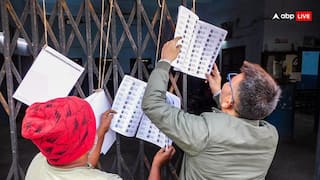Post-Covid Lung Problems Can Be Diagnosed By AI. This Study Explains How
Scientists have developed a new computer-aided diagnostic tool which could help overcome some of the challenges of monitoring lung health following viral infection. The new method is known as DLPE.

New Delhi: Scientists at King Abdullah University of Science and Technology, Saudi Arabia, have developed a new computer-aided diagnostic tool which could help overcome some of the challenges of monitoring lung health following viral infection. Covid-19, like other illnesses, can cause lasting harm to the lungs. However, doctors have struggled to visualise this damage. Since conventional chest scans do not reliably detect signs of lung scarring and other pulmonary abnormalities, it becomes difficult to track the health and recovery of people with persistent breathing problems and other post-Covid complications.
The study describing the new method was recently published in the journal Nature Machine Intelligence. The new method is known as Deep-Lung Parenchyma-Enhancing (DLPE). It overlays artificial intelligence algorithms on top of standard chest imaging data to reveal otherwise indescribable visual features indicative of lung dysfunction.
How Does The New Tool Work?
In a statement released by King Abdullah University of Science and Technology, Xin Gao, one of the study authors, said that through DLPE augmentation, radiologists can discover and analyse novel sub-visual lung lesions, and the analysis of these lesions could then help explain patients' respiratory symptoms, allowing for better disease management and treatment.
The tool first eliminates any anatomical features not associated with lung parenchyma, which is the portion of the lungs involved in gas exchange. The tissues of the lung parenchyma involved in gas exchange serve as the main sites of Covid-19–induced damage. This means the tool removes airways and blood vessels, and then enhances the pictures of what is left behind to expose lesions. Without the computer's help, these might be missed.
How Did The Researchers Train The Algorithms?
The scientists used computed tomography (CT) chest scans from thousands of people hospitalised with Covid-19 in China in order to train and validate the algorithms. Using input from expert radiologists, the scientists refined their method. Then, they applied DLPE in a prospective fashion for dozens of Covid-19 survivors with lung problems, all of whom had experienced severe disease requiring intensive care treatment.
The researchers demonstrated that the tool could reveal signs of pulmonary fibrosis in Covid long-haulers, or people suffering from long Covid. Therefore, the tool can help to account for shortness of breath, coughing, and other lung troubles.
Gao said with DLPE, for the first time, the team proved that long-term CT lesions can explain such symptoms.
The team developed the tool primarily with post-Covid recovery in mind. They also tested the platform on chest scans taken from people with various lung problems, including pneumonia, tuberculosis, and lung cancer. The scientists demonstrated how their tool could serve as a broad diagnostic aide for all lung diseases. Gao said this would empower radiologists to "see the unseen".
Check out below Health Tools-
Calculate Your Body Mass Index ( BMI )







































